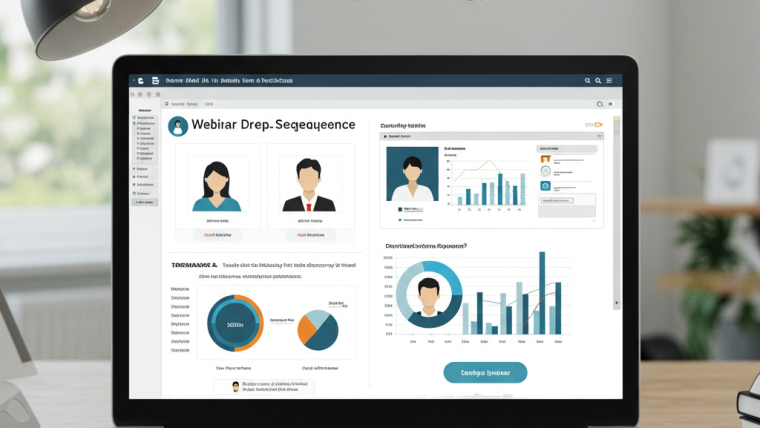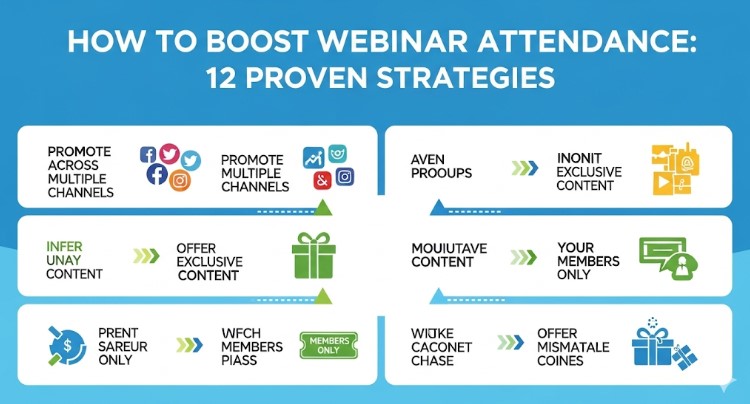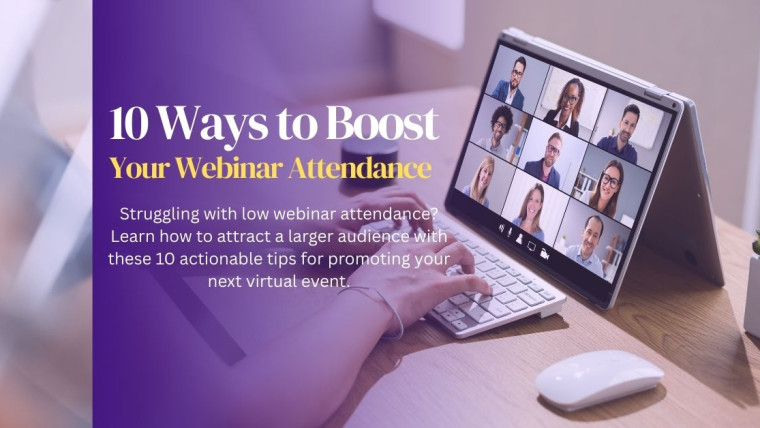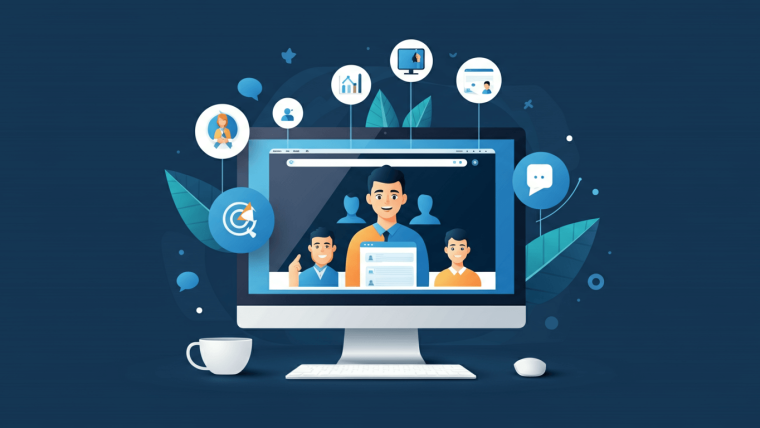We see the continued rise of webinars as a powerful medium of knowledge sharing, relationship building, and actionable results. From marketers who want lead generation to business owners who need customer engagement and educators who wish to get through to students — webinars can provide it all.
Curious about webinars, wanting to know what they are all about or how they can benefit you? This guide will take you through everything you need to know — from covering the basics to running and measuring your own awesome webinar.
What Is a Webinar? Definition and Purpose
In the simplest form, a webinar is a virtual event in real-time environment where people can listen, interact and engage to other participants. The term “webinar” is a combination of “web” and “seminar”, which perfectly describes what it is — a web-based presentation, training, or discussion.
It holds the power to reach a global audience, with no physical boundaries, which makes webinars an ideal choice for companies and educational institutes. Whether it is Run a Workshop or Have something to pitch or some Product to showcase or do a QnA Webinars have emerged as one of the most integral Communication and Collaboration tool for the world Online.
The Benefits of Webinars
What is it about webinars that they are a popular choice by businesses and educators? do not qualify for tax credit (at least not eligible for a federal tax credit), tax credit, they may be eligible to receive a tax credit.
1. Generate Qualified Leads and Build Relationships
Webinars are a powerful tool for marketers and organizations to generate and qualify leads. However, there’s an opportunity here for you to establish trust and earn potential customers’ loyalty by sharing useful information with them. You gather important data about your attendees like their contact info and interests to send tailored follow-ups.
2. Establish Brand Authority
Webinars allow both businesses and individuals the opportunity to showcase their expertise. Where you showcase an opinion or a discussion workshop, you basically establish yourself, or your brand, as the authority in that space.
A digital marketing agency running a webinar on “SEO Best Practices”, for instance, provides value to its audience, and positions itself as a go-to source of info.
3. Enable Real-Time Engagement
Direct interaction with your audience is one of the biggest benefits of webinars. Live Q&A, polling, and chat functions make it easy to answer questions, help facilitate discussion and keep your audience engaged throughout the whole event.
4. Cost-Effective and Scalable
Unlike in-person events, webinars eliminate the logistical costs associated with venues, travel, and catering. Whether you have 10 attendees or 1,000, hosting a webinar remains incredibly scalable without breaking your budget.
Types of Webinars
Webinars are versatile, making them suitable for numerous use cases. Here are a few common types of webinars and their unique purposes.
1. Product Demos
Product demonstration webinars are an excellent way to explain and showcase your product’s features and benefits. These typically feature a walk-through of how the product works, followed by a Q&A to address audience questions.
2. Educational Sessions
Webinars are often used for training or teaching purposes. For example, educators and experts might host an interactive workshop or an informational session on trending industry topics.
3. Q&A and Panel Discussions
Hosting a live Q&A session or panel discussion with multiple industry experts is a great way to attract an engaged audience. It provides valuable insights while fostering a sense of community among viewers.
Planning Your Webinar
The success of any webinar begins with thoughtful planning. Here’s how to set the stage for a seamless event.
1. Define Your Objectives
Why are you hosting this webinar? Whether you’re promoting a product, educating your audience, or building brand awareness, it’s critical to define clear goals. Your objectives will guide the topic, content, and format of your webinar.
2. Choose the Right Topic
Pick a topic that aligns with your audience’s interests and your goals. Use surveys, social media, or past customer inquiries to identify what matters most to your audience.
3. Create High-Quality Content
Invest time in developing visually engaging slides, scripts, and supporting materials. Your content should not only be informative but also visually appealing to keep your audience engaged.
Promoting Your Webinar
Creating a stellar webinar isn’t enough; you need the right promotional strategy to draw in attendees.
1. Email Marketing
Use targeted email campaigns to build anticipation. Clearly highlight the benefits of the webinar and include a simple call-to-action to register.
2. Leverage Social Media
Platforms like LinkedIn, Twitter, and Facebook are ideal for promoting webinars. Use teaser posts, countdowns, and branded event hashtags to create buzz.
3. Partner with Influencers or Businesses
Collaborate with relevant influencers or organizations to promote your webinar. Partnerships can expand your reach and attract a more targeted audience.
Delivering Your Webinar
When the big day arrives, ensure you’re fully prepared to deliver a polished and engaging webinar.
1. Choose the Right Technology
Select a reliable webinar platform like Zoom, GoToWebinar, or Microsoft Teams. Test your tools, including audio and visuals, before going live to avoid technical glitches.
2. Engage Your Audience
Use interactive elements like live polls, surveys, and Q&A sessions to maintain audience engagement. Incorporate real-world examples or anecdotes to make your presentation relatable.
3. Practice, Practice, Practice
Rehearse your presentation to ensure a smooth delivery. Familiarity with your content will boost your confidence and help you stay on track.
Measuring Webinar Success
Once your event is over, it’s important to evaluate its performance and identify areas for improvement.
1. Key Metrics to Track
- Attendance Rate: Compare the number of registrants to attendees.
- Audience Engagement: Analyze chat interactions, poll responses, and average viewing time.
- Lead Conversion: Track post-webinar actions, such as document downloads, demo requests, or purchases.
2. Request Feedback
After the webinar, send an attendee feedback survey. Insights from these surveys can help you improve future events.
Webinars as the Future of Engagement
Webinars have also become an invaluable tool for marketers, business owners and educators all over the world. They allow for direct engagement and create meaningful connections in a way that other formats just don’t exist.
Webinars are a great way to reach these goals, whether you’re looking to generate leads, build credibility in your niche, or educate people.
If you’re looking to level up your strategy, there has never been a better time to start experimenting with webinars. Maximize what these events can do for you by planning, promoting, and perfecting your first ever event!








Webinar Analytics: A Complete Guide to Measuring Success and Improving Performance
The Ultimate Webinar Follow-Up Strategy to Turn Attendees into Customers
Webinar Accessibility Best Practices: How to Make Your Online Events Inclusive for All
Webinar Personalization: Tailoring Content to Audience Segments for Maximum Engagement